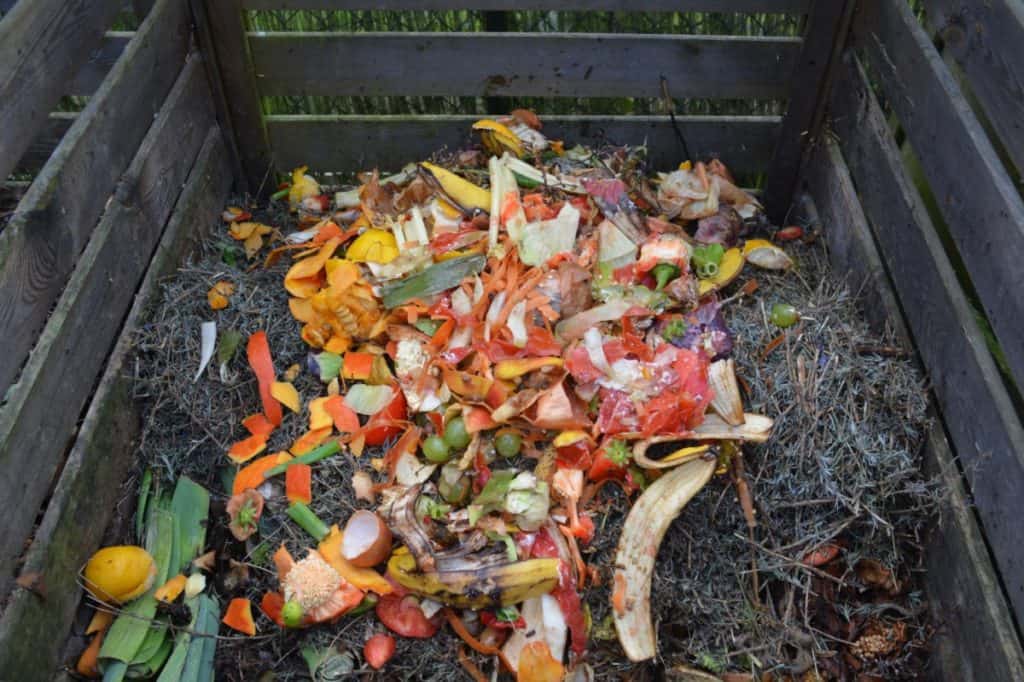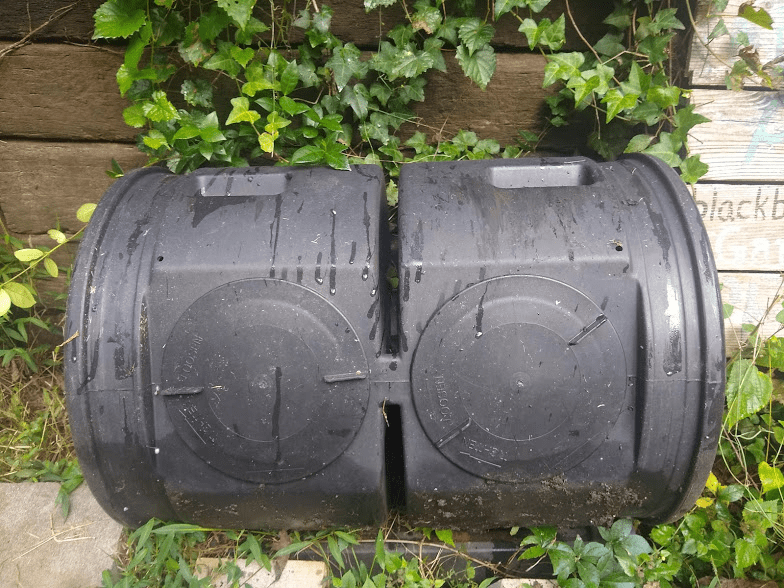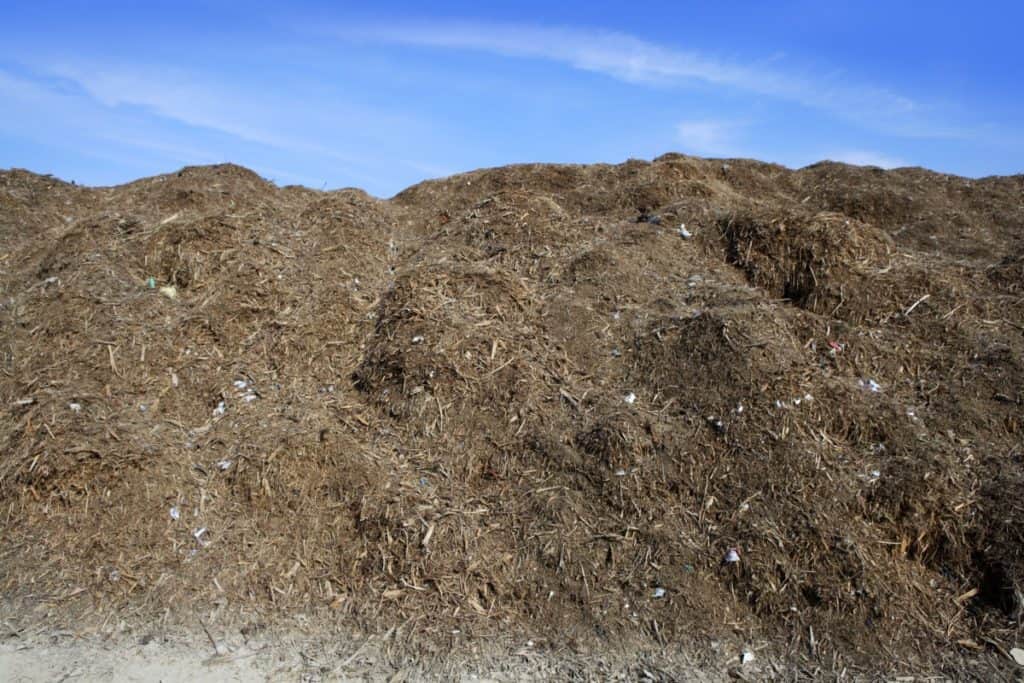If you are interested in vegetable gardening, composting should be a staple of your growing system. The soil is the foundation of every garden. Composting has many benefits for vegetable gardens, the environment, and the overall health of the planet.
It is the best soil amendment for larger more healthy vegetables, it’s a free homemade fertilizer and it saves you money!
In the United States, nearly 40 % of food is wasted each year. There is a value of roughly $161 billion in food waste in America each year. This is a staggering number and one that has to change if humans are going to make it to the next century.
Between 2015 and 2018, composted food and yard trimmings increased from 23.4 million to 24.9 million tons in the United States. According to the EPA, the US recovered almost 25 million tons of municipal solid waste (MSW) through composting in 2018. The US also composted 2.6 million tons of food or (4.1 percent of wasted food).
- What is compost?
- 67% of non-composters said they would compost if it were easier to do in their community.
- Statistics on composting
- Surprising composting facts that save organizations money
- Younger adults are more likely to own a compost bin
- Which states compost the most?
- Who buys the most compost?
- Compost reduces the need for expensive fertilizers
- Compostable garbage makes up 50% of municipal garbage dumped at the curb.
- Why should I compost?
- Composting is important for cropland
- Conclusion
What is compost?
Composting is the process of turning organic matter like fruit and vegetable waste into a black, crumbly soil-like material called humus. It is often used as a fertilizer and soil conditioner for crops.
Composting is a way of recycling, conserving resources, reducing pollution, and creating a sustainable way of life for you and your family.

67% of non-composters said they would compost if it were easier to do in their community.
240 pounds of food are wasted every year by the average household. Almost 1,000 pounds of CO2 can be avoided each year by reducing food waste to zero. Compostable materials (51%) make up more than half of the trash going to landfills (including food, paper, yard waste, and wood).
One survey found that 72% of Americans don’t compost their food waste, but 67% of these people would compost if it were more convenient to do so in their communities.
Statistics on composting
The average American family uses 320 gallons of water per day, about 30 percent of which is devoted to outdoor uses for gardening and lawn care.
A big advantage of compost is that if you add it to your garden soil it will hold up to 2.5 times more water than soil without it. This helps your pocketbook. The less water you use the smaller your water bill will be at the end of the month.
- The per capita rates in 2018 for composting were 0.42 pounds per person per day
- The rate of yard trimmings including grass clippings composted in 2000 was 51.7 % and 63 % (22.3 million tons) in 2018 a increase of 11.3%
- 2.6 millions tons of food are composted each year, this is a 2 ton increase since 2000.
- Energy recovery was used to combust 34.6 million tons of municipal solid waste in 2018. In 2017, food made up approximately 22 percent of the MSW combusted for new energy sources.
- There was a 239% increase in curbside compost pickup households between 2007 and 2012.
- Approximately 71% of US composting operations compost only yard trimmings according to a BioCycle study in 2014.
- One new business can be sustained by utilizing 10,000 tons of finished compost annually.
- By using 10,000 tons of compost annually, these new businesses can sustain an equivalent of 18 full-time jobs.
- Platt and Seldman (2000) found that composting provides four times the number of jobs per ton than landfilling or incineration.
- Yard trimmings made up 7.2 percent of all MSW in landfills in 2018. About 10.5 million tons were disposed of in 2018 according to the EPA.
- Supermarkets, restaurants, and schools produce 16 million tons of commercial organic waste annually that may be composted.
- Microorganisms breakdown compost best with a moisture content of 60 %.
- There were more than 50 million tons of compostable waste landfilled or incinerated in the United States in 2015.
- The average price per bag of compost was $4.72, but prices ranged from $2.35 to almost $8.
Surprising composting facts that save organizations money
- In 2011 by diverting 90% of its compostable waste away from landfills the Mariners Safeco Field in Seattle saved $91,000 in landfill costs.
- 2.6 million tons of yard trimmings were combusted in MSW in 2018 according to the EPA. The amount of municipal solid waste burned with energy recovery was 7.4 percent that year.
- Petco Park, the home of the San Diego Padres baseball team, diverted landfill waste since 2005 and saved the park $75,000 in landfill fees.
- New Seasons Market, a small grocery chain operating in the Pacific Southwest, began diverting food waste away from landfills in 2006, and has since reduced their disposal costs by $25,000. 2,410 tons of organic waste, including food waste, were diverted from landfills to compost.
- Middlebury College in Vermont used this opportunity and saved $100,000 in landfill fees by using compost. In this case, composting 90% of food waste resulted in a savings rate of $270 per ton of waste.
- Compost applications as part of an organic matter management system helped a California fruit and vegetable grower reduce pesticide use by 80 percent after three years.
- Composted fields reduced defoliation costs by an average of $35 per acre in the San Juaquin Valley compared to uncomposted fields.

Younger adults are more likely to own a compost bin
A survey by Statistica in 2017 found that younger adults are more likely to own a composting bin than older generations. This is a bit surprising but shows that the messages about the environment over the past decade are starting to resonate.
| Age Group | Own a composting bin | Don’t own a composting bin |
| 18 to 29 years of age | 32% | 68% |
| 30 to 59 years of age | 24% | 76% |
| 60 years of age or older | 14% | 86% |
Which states compost the most?
Research by Biocycle in 2012 found that the state of California had the highest composting tonnage at 5.9 million tons, followed by Florida at 1.5 million tons, Iowa at 1.3 million tons, Washington state at 1.2 million tons, and the state of New York at 1.0 million tons.
Who buys the most compost?
The two largest volume buyers of compost are landscapers and nurseries. Approximately 800 tons are purchased annually by landscapers, who pay an average of $9 per cubic yard. An average of $12.33 was paid per cubic yard by nurseries for compost.
Nurseries use the compost for their plants and sell bags of compost to their customers.
Compost reduces the need for expensive fertilizers
There are an estimated 120 million households in the United States. Almost a third of those (28%) households have homegrown vegetable and fruit gardens. If each one of these 33 million households with gardens purchases a $15 dollar bag of fertilizer that is $495 Million dollars spent in just one year.
This is a waste of money that can be put to better use.
If a gardener is amending their soil each year with compost they may not need commercial fertilizer at all depending on their soil makeup and environmental factors.
Compostable garbage makes up 50% of municipal garbage dumped at the curb.
21% of the compostable garbage left at the curb is food scraps. Even if someone has just a small area for a vegetable garden the act of composting can make a difference.
According to the EPA food composting was very small in 1990, but started to gain popularity and rose to 2.2 percent (680,000 tons) by the year 2000, it then double to 5.3 percent (2.1 million tons) in 2015 and 6.3 percent (2.6 million tons) in 2017.
The food composting rate by 2018 in the United States was 4.1% (2.6 million tons).
Composting grass clippings has a $37 dollar savings annually per ton. While backyard composting overall has a $38 dollar savings on collection and disposal costs per ton.
A more interesting number is that mixed waste composting collection and disposal saves $102 per ton. This is important as long-term landfills run out of room and prices start to rise to get rid of garbage.
Cities and communities across the country are catching on to this. As composting programs have increased by 65 % in the last five years, according to a recent study.

Why should I compost?
Composting helps the environment. The methane gas released into the atmosphere comes from the decomposition of waste food thrown into landfills. The global warming potential of methane is 21 times higher than that of carbon dioxide.
These landfills are some of the biggest emitters of methane gas in the United States. If all Americans composted, it would be equivalent to taking 7.8 million cars off the road.
Plant diseases and pests are suppressed by compost, which enhances soil fertility and helps retain moisture. By composting, chemical fertilizers can be reduced. A compost pile encourages the growth of beneficial bacteria and fungi responsible for breaking down organic matter and creating humus, which is a rich source of nutrients.
Recycled nutrients are returned to the soil through composting. It’s a great idea to recycle food scraps! The parts of food you don’t eat contain valuable vitamins and minerals that can be returned to the soil. These vitamins and minerals can then be used in growing next year’s vegetable garden and crops.
By adding compost to the soil, you attract beneficial critters and microorganisms. The soil needs to foster a community of organisms that are responsible for mending the soil, breaking down matter, improving its structure, and providing nutrient-rich conditions for plants. An abundance of organisms is found in compost that makes this possible.
Composting is important for cropland
99 million acres of cropland still fall prey to soil erosion (28% of all cropland) in the U.S., resulting in the long-term productivity of the soils not being sustained and new soil being insufficient to replace lost soil (NRCS, 2007).
Organic matter can improve soil structure and quality, boost water retention, reduce chemical fertilizer use, and pollution reduction. Research has shown that compost applications can help reduce soil loss by up to 86%.
Conclusion
Composting statistics show that overall municipal and county governments, as well as private citizens increasingly understand how important it is to divert yard trimmings and food scraps from ending up in landfills. By recycling and composting the world can reduce emissions into the atmosphere and make a better environment for the future.
The benefits of composting at home and for businesses are immense. Despite this, the infrastructure for composting food scraps is still lacking. While yard trimmings are already being recovered by many cities, there is still more work to do.

